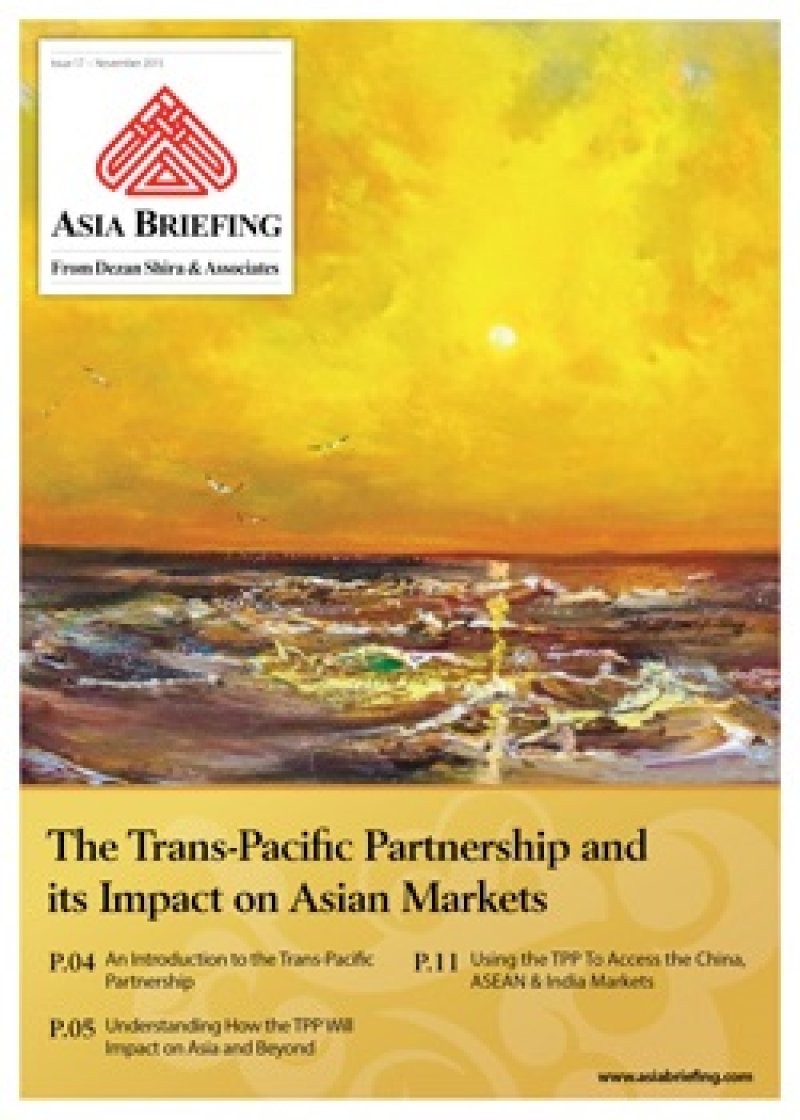
The Trans-Pacific Partnership and its Impact on Asian Markets
Published: November 2015In this issue of Asia Briefing magazine, we examine where the TPP agreement stands right now, look at the potential impact of the participating nations, as well as examine how it will affect Asian economies that have not been included.
No. of Pages: 12 pages
In this issue:
- An Introduction to the Trans-Pacific Partnership
- Understanding How the TPP Will Impact on Asia and Beyond
- Using the TPP to Access the China, ASEAN & India Markets
The United States backed Trans-Pacific Partnership Agreement (TPP) includes six Asian economies - Australia, Brunei, Japan, Malaysia, Singapore and Vietnam, while Indonesia has expressed a keen willingness to join. However, the agreement’s potential impact will affect many others, not least of all China.
Currently, the weakness of the TPP is that it only contains one major market - that of the United States. While that is a significant attraction for some industries across Asia, the omission of large emerging consumer markets such as China and India from TPP discussions thus far have made it a controversial project. Some critics take the view that the TPP agreement is intended to create regional competition for cheap Chinese exports that dominate the U.S. economy. Others see it as a welcome counterbalance to China’s massive manufacturing industries.
In this issue of Asia Briefing magazine, we examine where the TPP agreement stands right now, look at the potential impact of the participating nations, as well as examine how it will affect Asian economies that have not been included.

